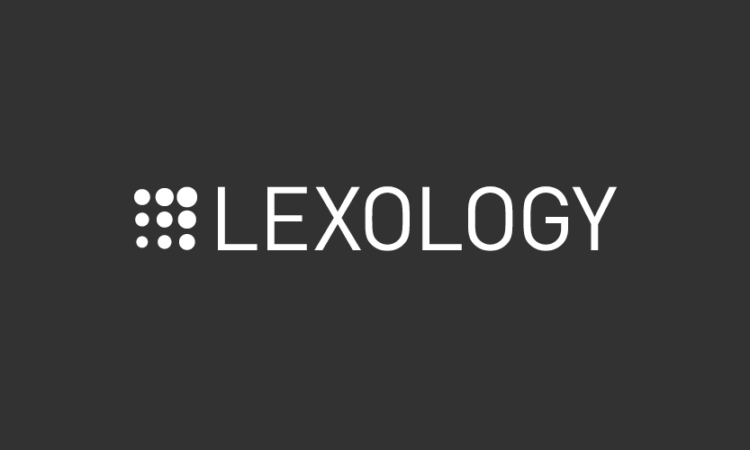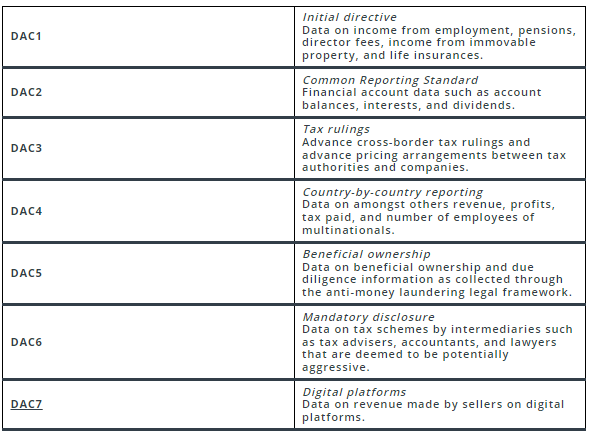
On 16 May 2023, the EU Economic and Financial Affairs Council (ECOFIN) reached agreement on amendments to the Directive on Administrative Cooperation (DAC) that will bring crypto-assets within the scope of existing reporting and information exchange obligations. Once fully adopted, this will be the eighth version of the DAC, known as DAC8.
In this article, we elaborate on the reporting obligations and exchange of information on crypto-assets under DAC8 and will briefly discuss other related changes to the DAC.
1. What is the rationale behind DAC8?
While the digitalisation of the economy offers many opportunities, it also poses challenges. One such challenge is how governments, including tax authorities, can keep track of relevant information on crypto-assets. The emergence of crypto-assets has radically changed the world of payments and investments, whilst crypto-assets are still poorly regulated at the EU level and tax authorities face difficulties in obtaining information on crypto-assets. The lack of transparency in the crypto-assets market makes it challenging for tax authorities to link crypto-assets to taxpayers. This puts the users of crypto-assets at an advantage compared to those who use assets, as tax authorities generally have no difficulty in obtaining information about the latter assets and subsequently taxing them.
2. In which context should DAC8 be placed?
DAC8 is the seventh amendment of the DAC since 2011. The DAC does not focus on taxation itself, but on the -increasing- collection and (automatic) exchange of information that could be used for the taxation of individuals and companies. Besides fair and efficient taxation as well as ensuring proper functioning of the internal market, DAC aims to combat tax fraud, tax evasion and tax avoidance by facilitating the exchange of information related to taxation.
Below is a summary of the information that should be reported to and exchanged with the tax authorities based on DAC1-DAC7:

In addition to developments at EU level, countries and organisations are discussing the tax treatment of crypto-assets and the lack of information that can be utilised for such taxation at a global level. DAC8 should also be placed in the context of the OECD’s Crypto-Asset Reporting Framework (CARF), which was approved in August 2022 and consists of model rules for the reporting and exchange of information in relation to crypto-assets, as well as the OECD’s updated Common Reporting Standard (CRS).
Although DAC8 is largely based on the CARF, it also refers to and builds on definitions included in the Markets in Crypto Assets Regulation (MiCAR), which will be partially applicable from 30 June 2024 and fully applicable from 30 December 2024. MiCAR aims to uniform the regulation of crypto-assets and crypto-asset services that fall outside the scope of the existing EU financial regulation schemes and will set conditions for access to the EU market for crypto-assets, replacing all national rules currently governing the issuance, trading, and custody of crypto-assets. For further information on MiCAR, we kindly refer you to our guide here.
3. What are the key reporting obligations?
DAC8 introduces reporting obligations for service providers that are regulated under MiCAR, as well as for other legal persons or undertakings providing crypto-asset services in the EU. Accordingly, crypto-asset service providers located outside the EU may also be subject to reporting obligations under DAC8 if they serve users resident in an EU Member State. Such reporting crypto-asset service providers can register in one single EU Member State to comply with DAC8.
If there is an effective qualifying competent authority agreement in place between a non-EU jurisdiction and the EU Member States, a crypto-asset service provider located in that non-EU jurisdiction is not required to register within the EU for DAC8 purposes.
Certain exclusions apply to stock-listed and governmental entities.
In short, the reporting crypto-asset service providers must report the following information about themselves, their users and the conducted transactions:
- With regard to reportable crypto-asset service providers: name, address, Tax Identification Number (TIN), and – if available – the individual identification number and the global legal entity identifier.
- With regard to reportable users: name, address, TIN, EU Member State of residence, and date and place of birth.
- With regard to reportable crypto-assets transactions (transfer, or exchange into other crypto-assets or fiat currencies): full name of the crypto-assets, gross amounts paid and received, number of units, number of transactions, and fair market value.
To be able to provide all the above details, reporting crypto-asset service providers need to set up extensive due diligence procedures.
Whereas a previous version of DAC8 provided for harmonised minimum penalties in cases of non-compliance, the sanctioning of non-compliance is now left to the discretion of the EU Member States, provided that the sanctions are adequately effective, proportionate, and dissuasive.
4. How will the reported information be used?
The collected and verified information on the reportable crypto-assets transactions must be reported by the reporting crypto-asset provider by 31 January of the year following the relevant calendar year. The reporting crypto-asset provider must report in one EU Member State only, and that EU Member State must transmit the reported information to the relevant EU Member State where the reporting user resides.
DAC8 only provides for the reporting and exchange of information on crypto-assets. Whether and how EU Member States subsequently will be using this information for personal income tax, corporate income tax, VAT, administration, and enforcement of customs duties, and/or anti-money laundering and countering the financing of terrorism, is up to each EU Member State to decide.
It is expected that as tax authorities obtain more data on crypto-assets, enforcement of the taxation of such assets will increase. Further guidance on the taxation of crypto-assets is expected to be made available, which would be helpful to taxpayers as it is currently not clear in every EU Member State exactly how crypto-assets are taxed.
5. What other changes will DAC8 introduce?
In addition to the automatic exchange of information on crypto-assets, DAC8 also changes and/or extends existing provisions on the exchange of information to improve the effectiveness of the DAC, such as:
- Exchange of advance cross-border rulings involving the tax affairs of individuals when (i) the amount of the transaction or series of transactions to which the ruling relates exceeds EUR 1,500,000; or (ii) the ruling relates to the determination of the tax residence of the individual.
- Broadening the scope of categories of income and capital subject to the exchange of information by adding non-custodial dividend income (income from dividends that are not paid or cashed in a custodial account).
- Clarification that the information exchanged under DAC may also be used for other purposes than taxation (e.g. economic sanctions).
- Clarification that e-money (tokens) and central bank digital currencies are already covered by DAC2.
- The requirement to include the TIN of reported individuals or entities when exchanging information. In order to ensure the correctness of the TIN, the EU Commission will develop and provide the EU Member States with a tool to verify the correctness of exchanged TINs automatically and electronically.
- The introduction of so-called “identification services” as a simplified and standardised means of identification of service providers and taxpayers.
6. When will the amendments be effective and what are the next steps?
- After the formal adoption of DAC8, all EU Member States should implement the legislation into their national law by 31 December 2025 at the latest. Crypto-assets service providers should comply with the reporting obligations in relation to crypto-assets as introduced by DAC8 from 1 January 2026. The first calendar year during which DAC8 will apply is 2026. By 31 January 2027 at the latest, the reporting obligations covering 2026 must be fulfilled in the relevant EU Member State.For certain parts of DAC8, a different timetable will apply:The provisions on identification service, an electronic process for ascertaining identity and tax residence, will apply from January 2025.
- The provisions on the verification on the TIN for the exchange of information on income from employment, director’s fees, and pensions will apply from 1 January 2030. The provisions on the verification on the TIN for other cases will apply from 1 January 2028.






